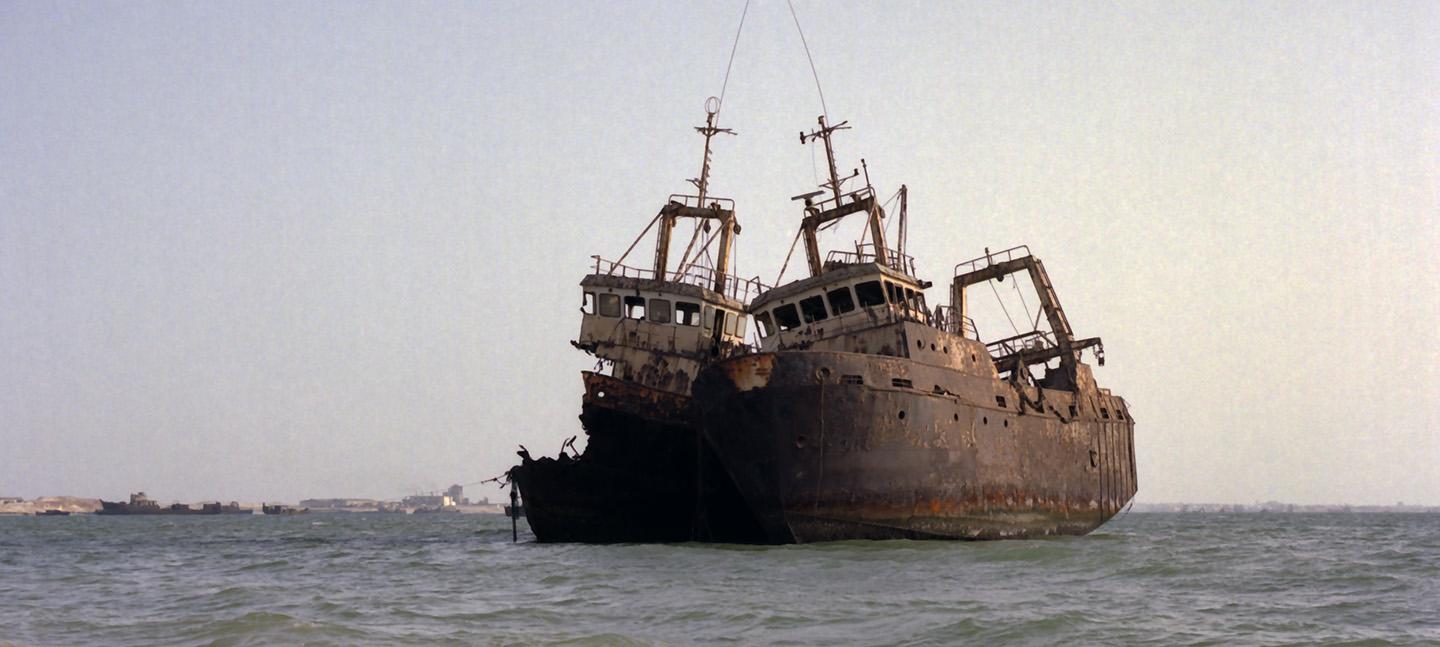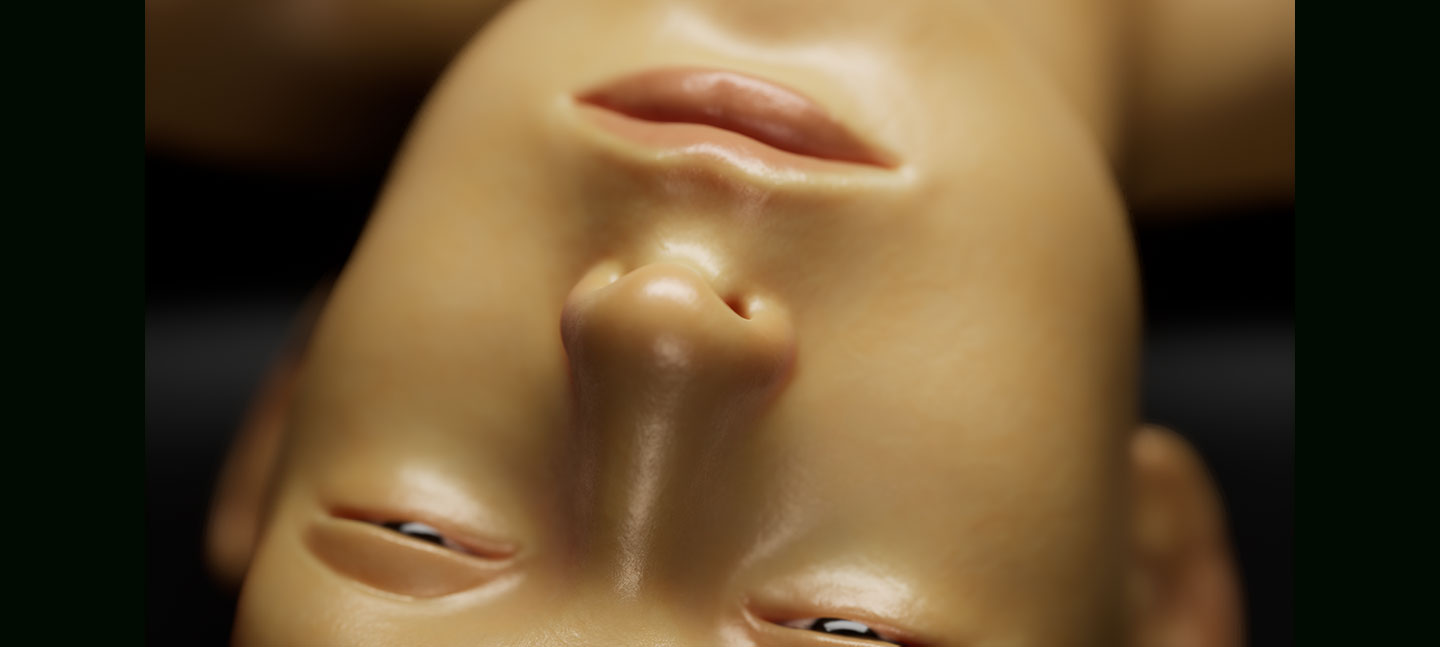
16 October 2021 – 6 February 2022
This October, Somerset House presents We Are History, a new group exhibition offering a different perspective on the human impact on the planet by tracing the complex interrelations between today’s climate crisis and legacies of colonialism. The exhibition, which opens to coincide with 1-54 Contemporary African Art Fair, spotlights the works of 11 artists with personal connections to countries in the Caribbean, South America and Africa, bringing to the fore the perspectives of their communities, not as an afterthought in climate debates, but as the source of resonant ideas and imagery related to social and environmental justice.
Curated by writer Ekow Eshun and showcasing photography, prints, textile, installation and video, We Are History presents works which are moving, lyrical and thought-provoking, capturing nature as a place of both beauty and fragility. Featuring artists Alberta Whittle, Allora & Calzadilla, Carolina Caycedo, Louis Henderson, Malala Andrialavidrazana, Mazenett Quiroga, Otobong Nkanga, Zineb Sedira and a newly comissioned work by multi-disciplinary artist Shiraz Bayjoo, the exhibition interrogates the environmental issues facing the southern hemisphere by looking to the past and drawing important insight from the cultural practices and knowledge systems of indigenous peoples.
Collectively, the exhibition’s contributors seek to expand the common narrative around climate change, a subject which is often linked to the beginning of the Industrial Revolution in the West. We Are History invites visitors to look further back in time, exploring the role significant periods of change, such as the 18th century colonial era, which saw plantation agriculture and the forced mass migration of people through slavery, first played in reshaping lives and landscapes on a global scale.
The exhibition opens with work from Puerto Rico-based artist duo Jennifer Allora & Guillermo Calzadilla. Allora & Calzadilla catalogue sites in Vieques, Puerto Rico, where palm trees were used as natural markers by the U.S. military during their sixty-year occupation of the island, to identify where hazardous waste had been disposed. These sites, which are now paradoxically managed as “Conservation Zones”, are photographed by Allora & Calzadilla and disrupted using a screen-printing method, where layers of black ink are used to taint and fragment the idyllic harmony of the landscape scenes captured, unearthing the underlying health hazards of these now preserved sites.
We Are History continues to trace impactful human intervention through the work of multidisciplinary artist Carolina Caycedo. Born to Colombian parents, Caycedo looks towards Colombia, Mexico and Brazil, to document the effects of damming on surrounding communities and landscapes. Presenting archival images, maps, poems, satellite photos and researched texts, displayed in a meandering accordion fold-style artist book, Caycedo’s Serpent River Book tracks the power dynamics associated with the corporatisation and decimation of water resources, and the continued work communities - who are displaced as a result of extraction - undertake to repel and resist the continued building of these structures.
In a new work specially commissioned for the exhibition, multi-disciplinary artist Shiraz Bayjoo presents Dan Sa Karo Kann (in those cane fields), a work which deconstructs the material and visual languages of coloniality imposed on native populations in the Indian Ocean. Bringing together past and new works of ceramics, sculptures and textiles, Dan Sa Karo Kann (in those cane fields) considers the plantation as a site of extraction and seeks to restructure and re-dignify the archive of people and places affected by legacies of empire.
Franco-Algerian photographer and video artist Zineb Sedira presents two large-scale photographs, The Lovers (2009) and Sugar Routes I (2013). In Sugar Routes I (2013), Sedira documents the movement of sugar for mass consumption across the Atlantic from the southern hemisphere to its final destination - a modern warehouse in the French port city of Marseille. Here the sugar, stored in piles resembling mountains, is filtered and its original identity becomes lost, further bringing to light commentary on society’s history of human migration across oceans.
In Contained Measures: Kolanut Tales (2012), Nigerian-born visual and performance artist Otobong Nkanga similarly reflects on the harvesting and transportation of the kola nut and its cultural significance in Nigeria, which flourished on the global market as an early ingredient in Coca-Cola but fell out of fashion due to its requirements of care. Using woven textile, Nkanga brings together imagery of the kola nut in transit and its seed pods, which rest amongst a kola tree stripped of its leaves.
Drawing further upon the themes of the movement, and the relationship between societal traditions and globalisation, Madagascar-born artist Malala Andrialavidrazana presents works from her ongoing series ‘Figures’. Taking form as a series of large-scale prints, works including Figures 1937, Lignes télégraphiques et sous-marines (2018) and Figures 1852, River Systems of the World (2018) explore the impact of visual legacies on our social perceptions, relationships and environment. Using identifiable signs, symbols and clichés of the recent past, from outdated regional and world atlases to bank notes and world stamps, Andrialavidrazana questions how inaccurate knowledge, biased cultural norms and imagined hierarchies can be used to cement power and domination.
Artist duo Mazenett Quiroga explore the relationships between living organisms and how the ‘resources’ in their ecosystems, both mineral and biological, are appropriated and expanded across cultures, becoming integral to globalised economies and our daily lives. Drawing upon a fascination with the jaguar, present as a physical and spiritual animal in most native American cultures, the artists explored the animal’s habitat in the Colombian Amazon and the Lacandon jungle of Mexico, where mineral mining is threatening the environment. In Selva Intervenida (Amazonas), photographs of the jungle landscape can be seen overlaid with geometric patterns corresponding to the crystalline shape of gold.
Two video works complete the exhibition including interdisciplinary artist Alberta Whittle’s From the forest to the concrete (to the forest) (2019). Developed during the aftermath of Hurricane Dorian in 2019, one of the most powerful cyclones to strike the Caribbean in modern times, Whittle interweaves performance with footage of the cyclone’s destruction, calling upon viewers to reflect upon their relative comfort living in the UK and elsewhere, in contrast to the destructive impact of the weather and societal inequalities affecting other parts of the world.
Further in the exhibition, filmmaker Louis Henderson uses film to critique European colonial history in The Sea is History, presenting an adaptation of Derek Walcott’s poem of the same name, overlayed with imagery filmed on Lago Enriquillo in the Dominican Republic, a hyper-salinated lake that continually floods the border with Haiti, due to the drastic rise in sea temperatures affecting the global ocean.
Ekow Eshun, Curator: “The artworks in We Are History are lyrical, moving and historically charged. They seek to address climate crisis, not directly or didactically, but with a poetry and nuance that expands the visual framework we bring to the subject. By preferencing perspectives from the global South, the exhibition also identifies environmental change as a racial process with deep roots in colonial history.”
Clare Woodman, Head of EMEA at Morgan Stanley: “We are proud to support this thought-provoking exhibition as the artists take an innovative look at climate change through diverse perspectives, exploring the complex relationship between socio-economic history and the human impact on our planet.”
CONTRIBUTORS:
Alberta Whittle, Allora & Calzadilla, Carolina Caycedo, Louis Henderson, Malala Andrialavidrazana, Mazenett Quiroga, Otobong Nkanga, Shiraz Bayjoo, Zineb Sedira.
We Are History is sponsored by Morgan Stanley.
NOTES TO EDITORS
Dates: 16 October 2021 - 6 February 2022
Opening hours: Mon, Tues, Sat & Sun: 11.00 – 18.00, Weds, Thurs & Fri: 12.00 – 20.00
Tickets:
Entrance to the exhibition is ticketed, visitors must pre-book their timed ticket slot online (with suggested donation) at somersethouse.org.uk
ABOUT EKOW ESHUN
Ekow Eshun is a writer, critic and curator. He is Chairman of the Fourth Plinth Commissioning Group and Creative Director of Calvert 22 Foundation, an arts organisation dedicated to the contemporary culture of Eastern Europe.
He is the former Director of the ICA and a frequent contributor to TV and radio shows including Saturday Review and Front Row on BBC Radio 4. His writing has appeared in publications including the New York Times, The Financial Times, The Guardian, The Observer, Granta, Vogue, Aperture and Wired. He is the author of Black Gold of the Sun, which was nominated for the Orwell prize, and the editor of Africa Modern: creating the contemporary art of a continent.
He is the recipient of an honorary doctorate from London Metropolitan University and has been listed by the Evening Standard as one of London’s 1000 Most Influential People. Portraits of him, by photographers Jillian Edelstein and Simon Fredericks, are held in the permanent collection of the National Portrait Gallery.
ABOUT SOMERSET HOUSE
London’s working arts centre
Somerset House is London’s working arts centre and home to the UK’s largest creative community. Built on historic foundations, we are situated in the very heart of the capital.
Dedicated to backing progress, championing openness, nurturing creativity and empowering ideas, our cultural programme is ambitious in scope. We insist on relevance, but aren’t afraid of irreverence, and are as keen on entertainment as enrichment. We embrace the biggest issues of our times and are committed to oxygenating new work by emerging artists. Where else can you spend an hour ice-skating while listening to a specially commissioned sound piece by a cutting edge artist?
It is this creative tension – the way we harness our heritage, put the too-often overlooked on our central stage and use our neo-classical backdrop to showcase ground-breaking contemporary culture – that inspires our programme. Old and new, history and disruption, art and entertainment, high-tech and homemade, combined with the fact that we are home to a constantly shape-shifting working creative community: this is our point of difference. It is what we are proud of. And it is what makes the experience of visiting or working in Somerset House inspiring and energizing, urgent and exciting. somersethouse.org.uk
ABOUT MORGAN STANLEY
Morgan Stanley is a leading global financial services firm providing investment banking, securities, wealth management and investment management services. With offices in more than 41 countries, the Firm's employees serve clients worldwide including corporations, governments, institutions and individuals. For more information about Morgan Stanley, please visit www.morganstanley.com.



